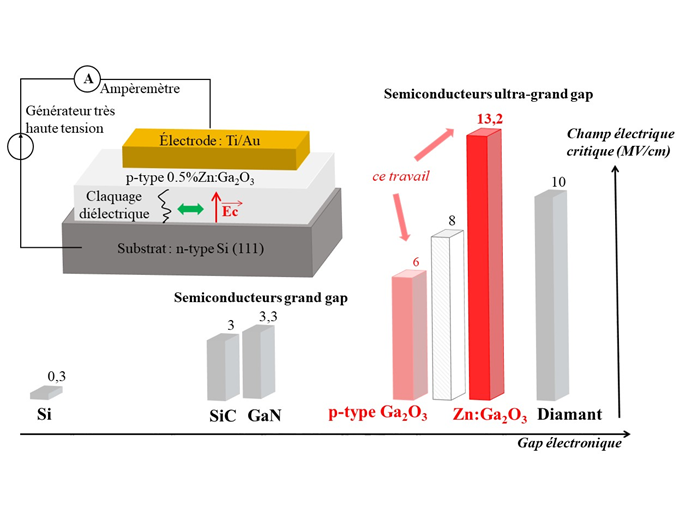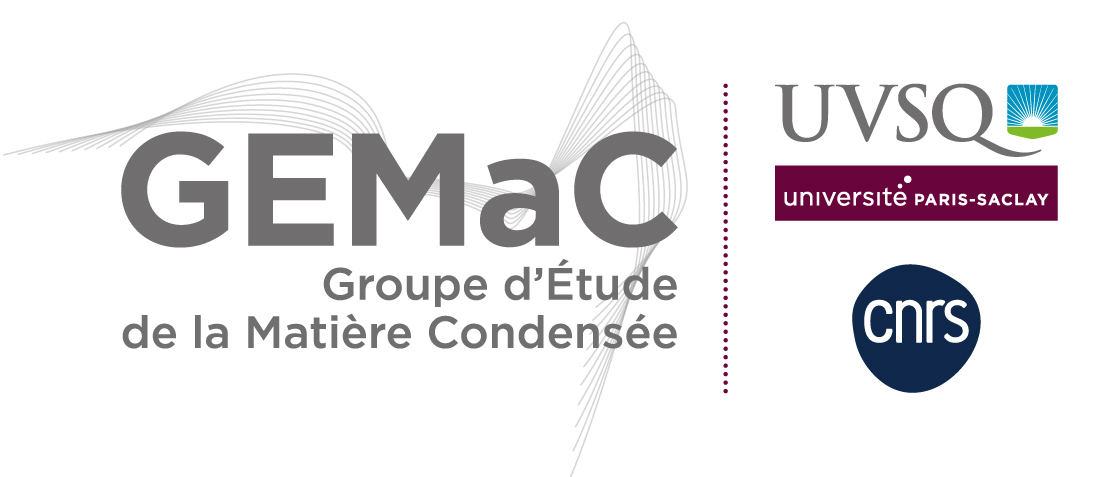You are here : GEMACENHighlights
- Partager cette page :
- PDF version
Critical electric field record for gallium oxide
Increasing the voltage and avoiding breakdown of materials used in power electronics remain a current challenge. The researchers broke a record for the critical electric field with a value of 13.2 MV/cm. This result has been selected as "News from Physics Institute" of CNRS.
First, the researchers synthesized the material in the form of a thin film of β-Ga2O3 on silicon by the technique of metalorganic chemical vapor deposition (MOCVD) and realized a simple device allowing the measurement of the breakdown voltage (figure). A critical field value of 6 MV/cm was measured, in accordance with previous studies. Guided by a thermodynamic theoretical analysis of point defects demonstrating the amphoteric character of the zinc dopant in β-Ga2O3 (i.e. its properties as both electron donor and acceptor), the researchers have very slightly doped (0.5%) the Ga2O3 films with zinc. On the same device, a record critical electric field of 13.2 MV/cm is then measured, beyond the direct interpolation of 8 MV/cm predicted solely on the basis of the electron gap value (4.8 eV). The interpretation is developed here by a microscopic theory, the kinetic theory of ionization by impact, which, applied to the amphoteric character of Zn, demonstrates the reduction of the mean free path of free charge carriers, at the same time as the decrease in their concentration. These two factors jointly contribute to the increase of the critical electric field. This study clearly confirms the advantages that possesses gallium oxide for very high voltage power electronics and is published in the journal Materials Today Physics.

Figure. (top left) Device allowing the measurement of the electric field withstand by the zinc-doped Ga2O3 film.
(bottom) Examples of semiconductor materials with large and ultra large gaps, with their critical electric field values (in MW/cm). The red bars represent the values measured in this work for Ga2O3, with the record value of 13.2 MW/cm in the case of zinc doping, the white bar illustrating the value that was expected.
Read more:
Ultra-High Critical Electric Field of 13.2 MV/cm for Zn-doped p-type β-Ga2O3.
E. Chikoidze, T. Tchelidze, C. Sartel, Z. Chi, R. Kabouche, I. Madaci, C. Rubio, H. Mohamed, V. Sallet, F. Medjdoub, A. Perez-Tomas et Y. Dumont,
Materials Today Physics 15, 100263 (2020).
Link HAL : hal-02984814v1
News from Physics Institute CNRS
Contact:
Ekaterine Chikoidze, CNRS research engineer; ekaterine.chikoidze@uvsq.fr
Yves Dumont, UVSQ professor; yves.dumont@uvsq.fr





